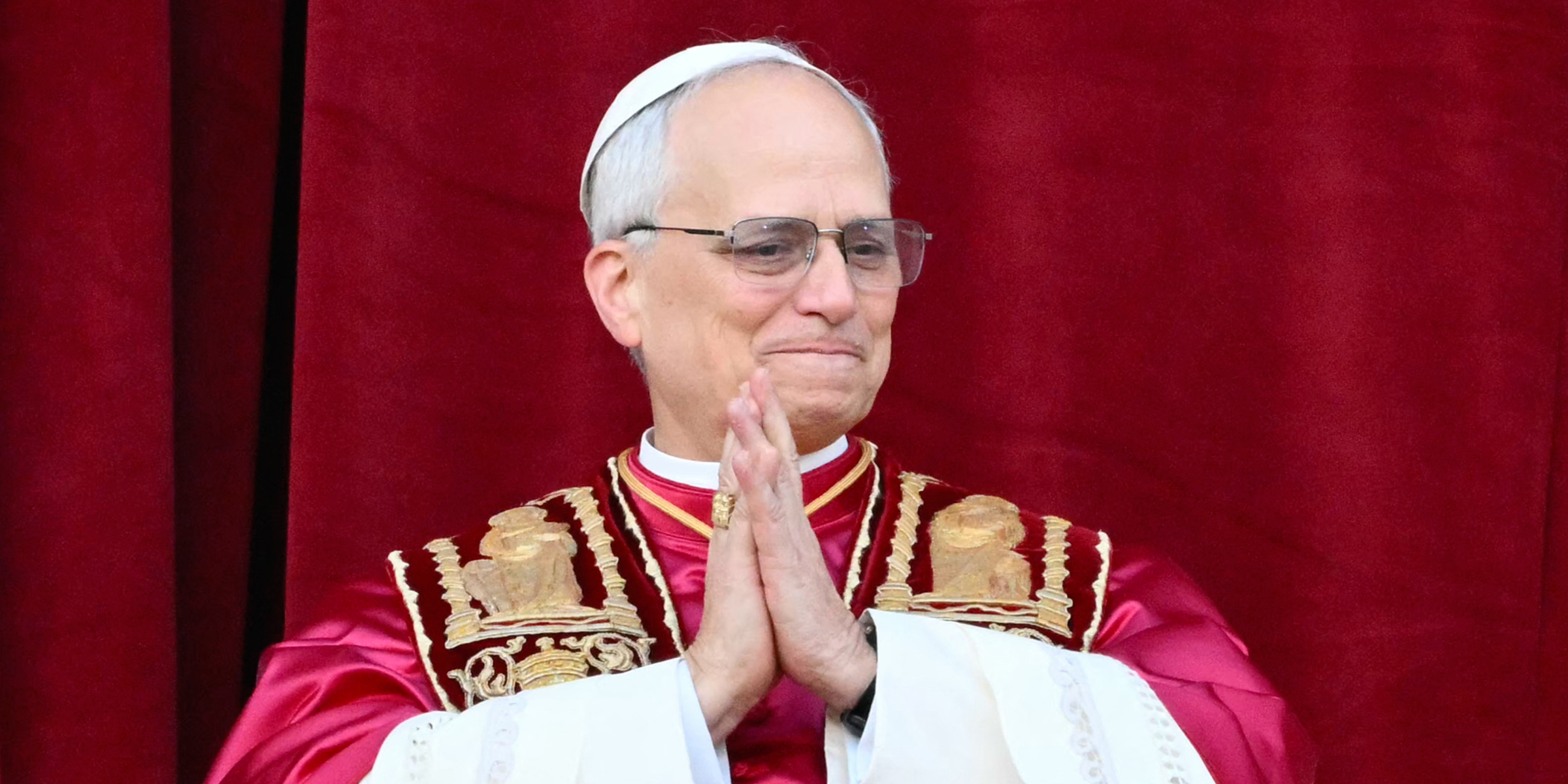
'Goosebumps': Pope Leo XIV Gives His First Speech as New Pontiff
The new pope delivered his first public message — an address that drew global attention and left many viewers visibly moved.
On Thursday, May 8, 2025, Cardinal Robert Prevost appeared on the central balcony of St. Peter's Basilica as Pope Leo XIV. In his first speech, he spoke about peace, unity, and continuing the work of Pope Francis. His words reached far beyond the crowd gathered below.

A netizen's comment on Pope Leo XIV's speech at St. Peter's Basilica in Vatican City, Rome, Italy, on May 8, 2025 | Source: Facebook/ABC News
He began with the greeting, "Peace be with all of you," emphasizing its universal significance. Describing it as a "disarming peace" grounded in humility and perseverance, he expressed hope that it would reach individuals and families worldwide.
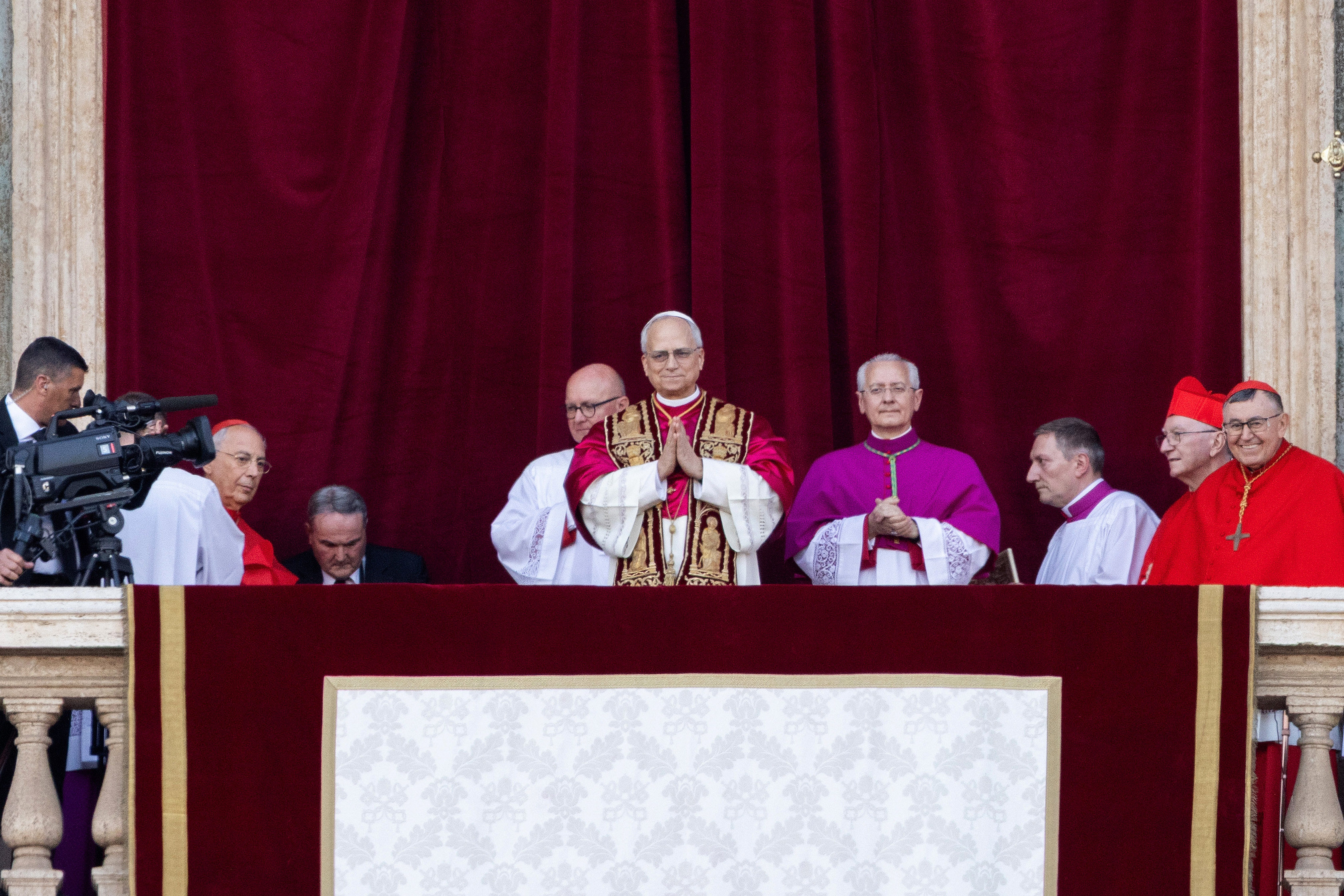
Cardinals gather in Vatican City as the newly elected Pope Leo XIV appears for the first time on the Vatican balcony on May 8, 2025 | Source: Getty Images
Referencing Pope Francis, he said, "The Pope who blessed Rome, gave his blessing to the world, to the entire world, that Easter morning. Allow me to follow up on that same blessing: God loves us, God loves you all, and evil will not prevail!"
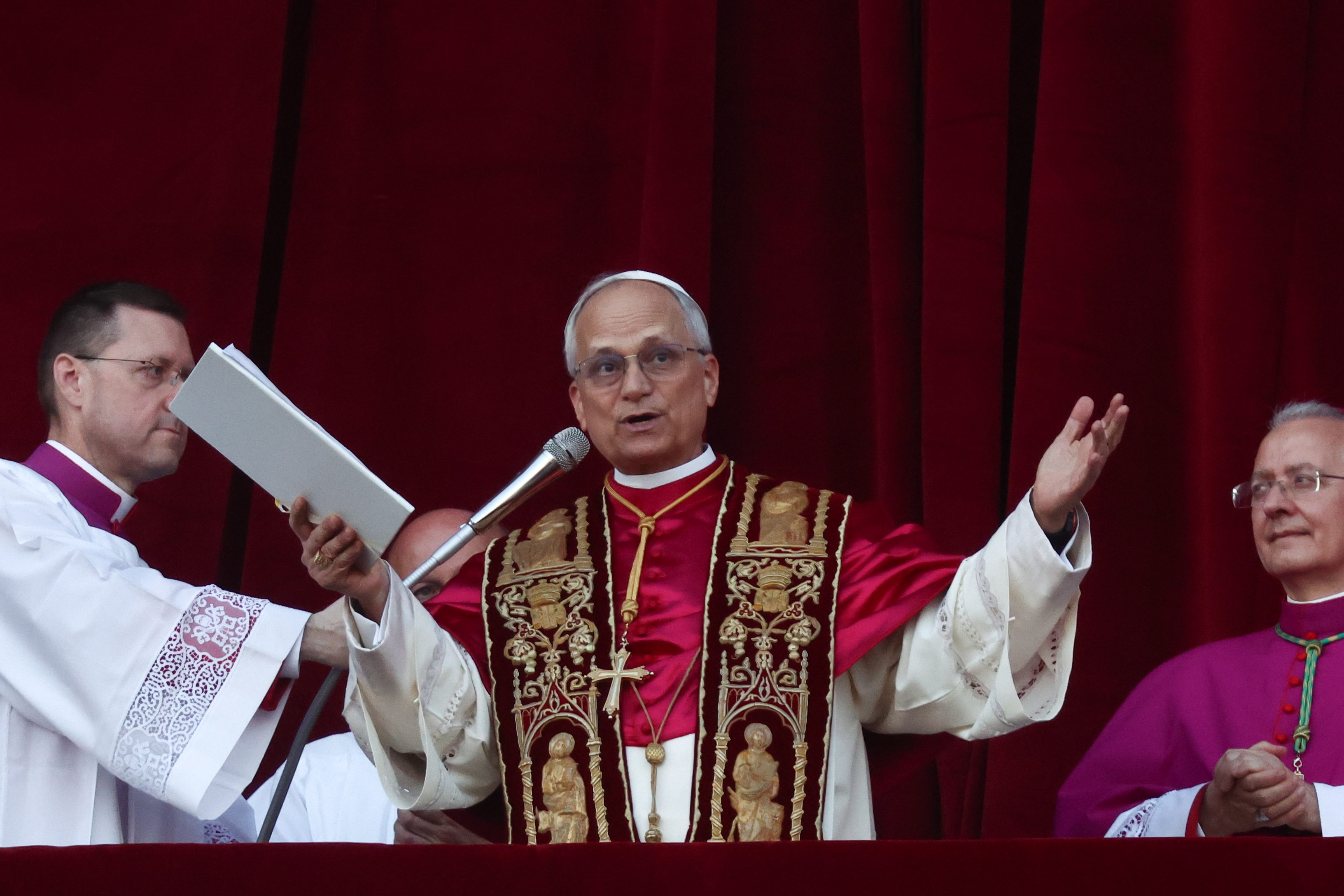
Cardinal Robert Prevost, newly elected as Pope Leo XIV, delivers his first public address from the balcony of Saint Peter's Basilica on May 8, 2025 | Source: Getty Images
He encouraged the faithful to move forward without fear, united in faith, and described Christ as a light the world continues to seek. The pope urged believers to help build bridges through dialogue and shared action, noting the Church's role in serving those in need.
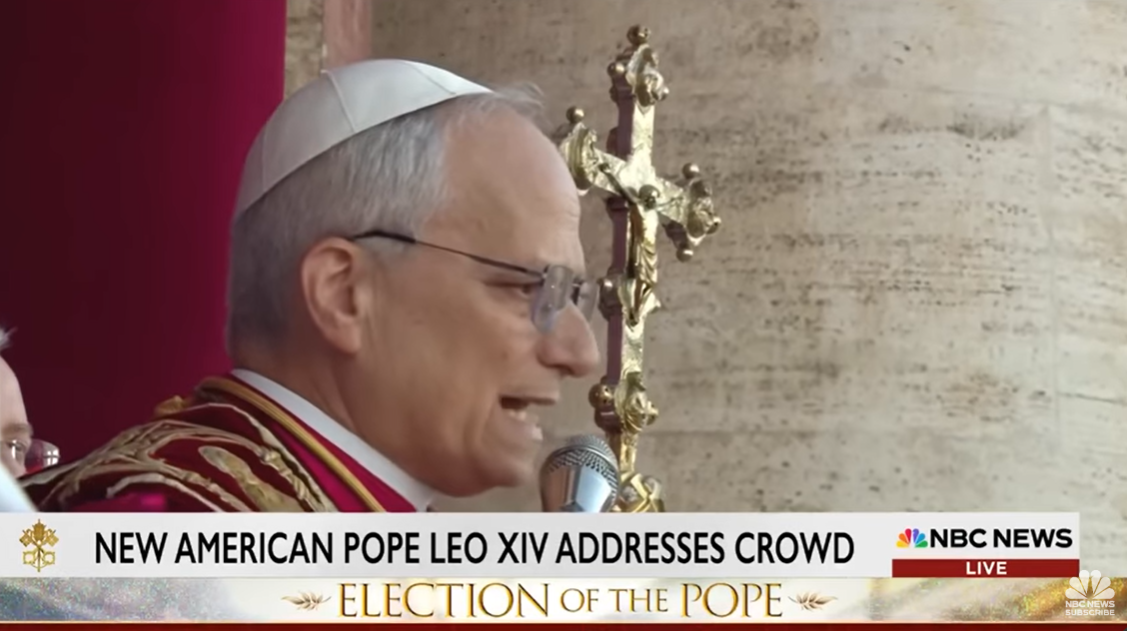
Pope Leo XIV faces the public crowd from the balcony of Saint Peter's Basilica on May 8, 2025 | Source: YouTube/NBC News
Leo XIV also acknowledged his fellow cardinals for their trust, thanked his former diocese of Chiclayo in Peru, and cited Saint Augustine, "With you I am a Christian and for you I am a bishop." He expressed hope for a Church that is missionary, open, and close to those who suffer.
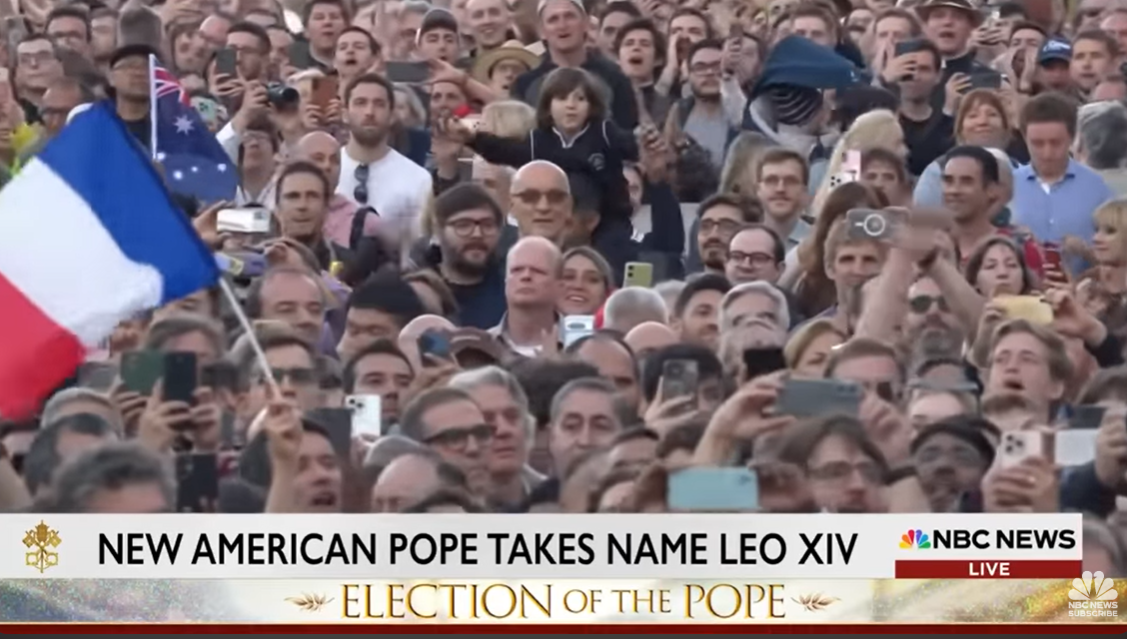
Crowds gather at Saint Peter's Square to witness the public appearance of Pope Leo XIV, the first American elected to the papacy | Source: YouTube/NBC News
He concluded by marking the day of the Supplication to Our Lady of Pompeii, inviting the faithful to join him in prayer for peace and guidance as he begins his mission.
The address prompted swift responses online. One viewer wrote, "Goosebumps." Another commented, "His words brought actual chills... peace and unity are exactly what our world needs right now. I have hope in this new chapter for the Church."
Some viewers saw broader implications in the pope's message. One, referring to U.S. President Donald Trump, remarked, "And sent a message to Trump ! 🙏🏼💙✝️" Another echoed this sentiment, "He's talking to you Donnie!"
Others responded with humor. One joked about how long it might take for Trump to try to "fire" the pope, referencing the U.S. president's well-known pattern of dismissing people.
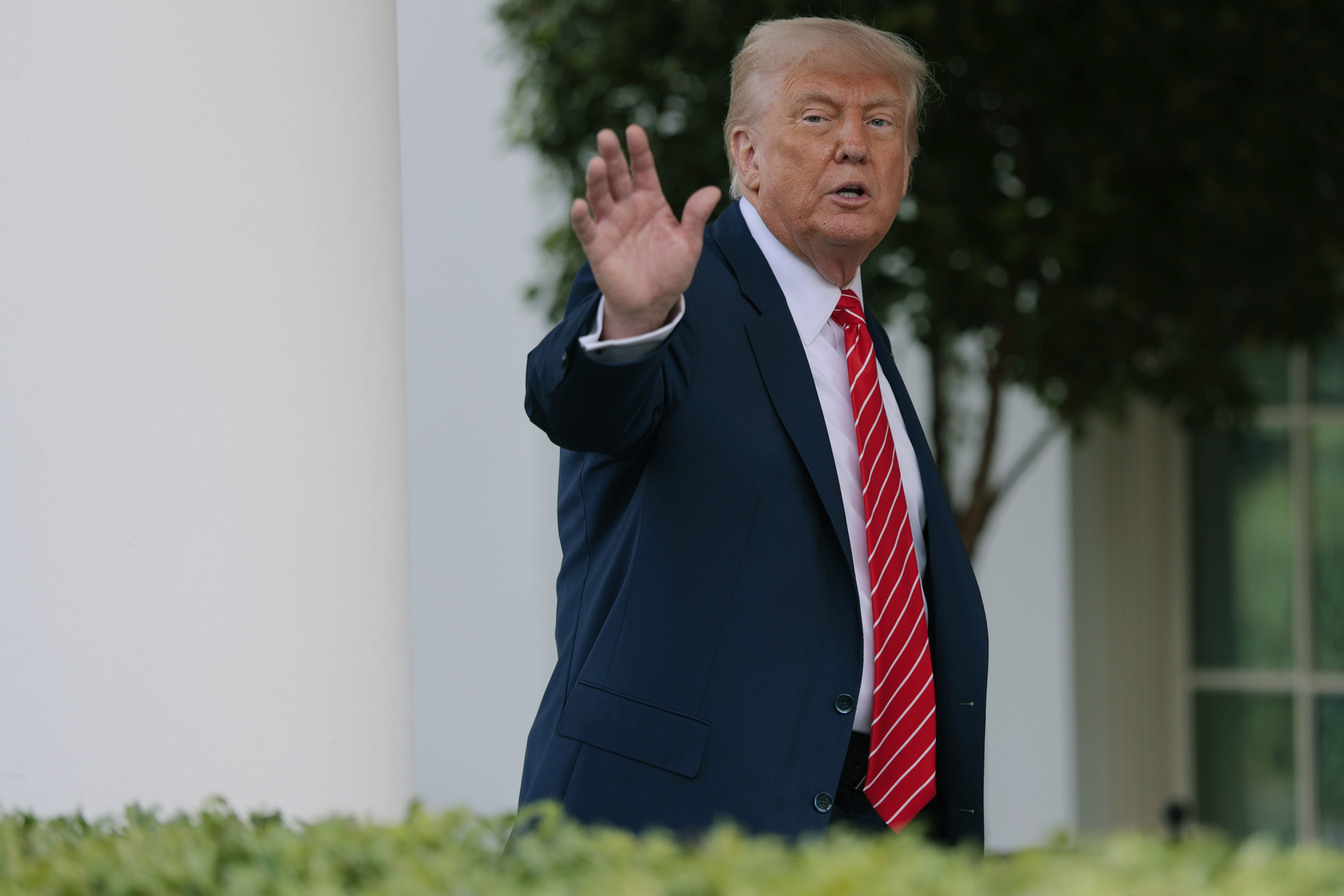
President Donald Trump outside the White House in Washington, D.C., on May 8, 2025 | Source: Getty Images
A separate comment drew a contrast between the pope's call to "build bridges" and Trump's past message about building walls, suggesting a sharp difference in values. Another expressed concern that the speech sounded more progressive than expected and hoped the pope would uphold traditional Church teachings.
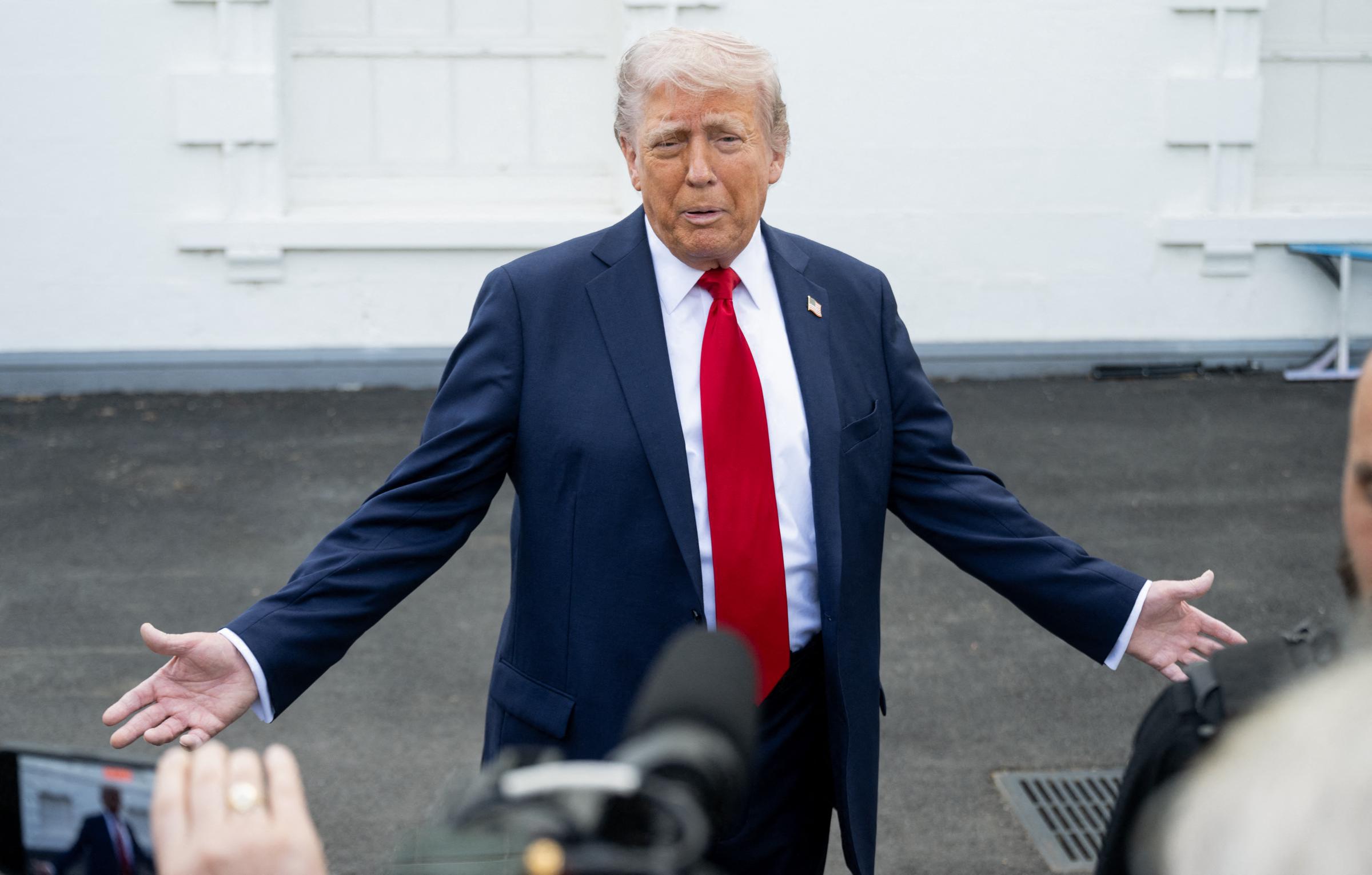
President Donald Trumptalks to reporters outside the White House in Washington, DC, on April 23, 2025 | Source: Getty Images
Some highlighted the pope's American background. One pointed out that although he was born in the U.S, he now serves the global Church. Another remarked that remembering his home country would have been meaningful, especially given the historic nature of his election.
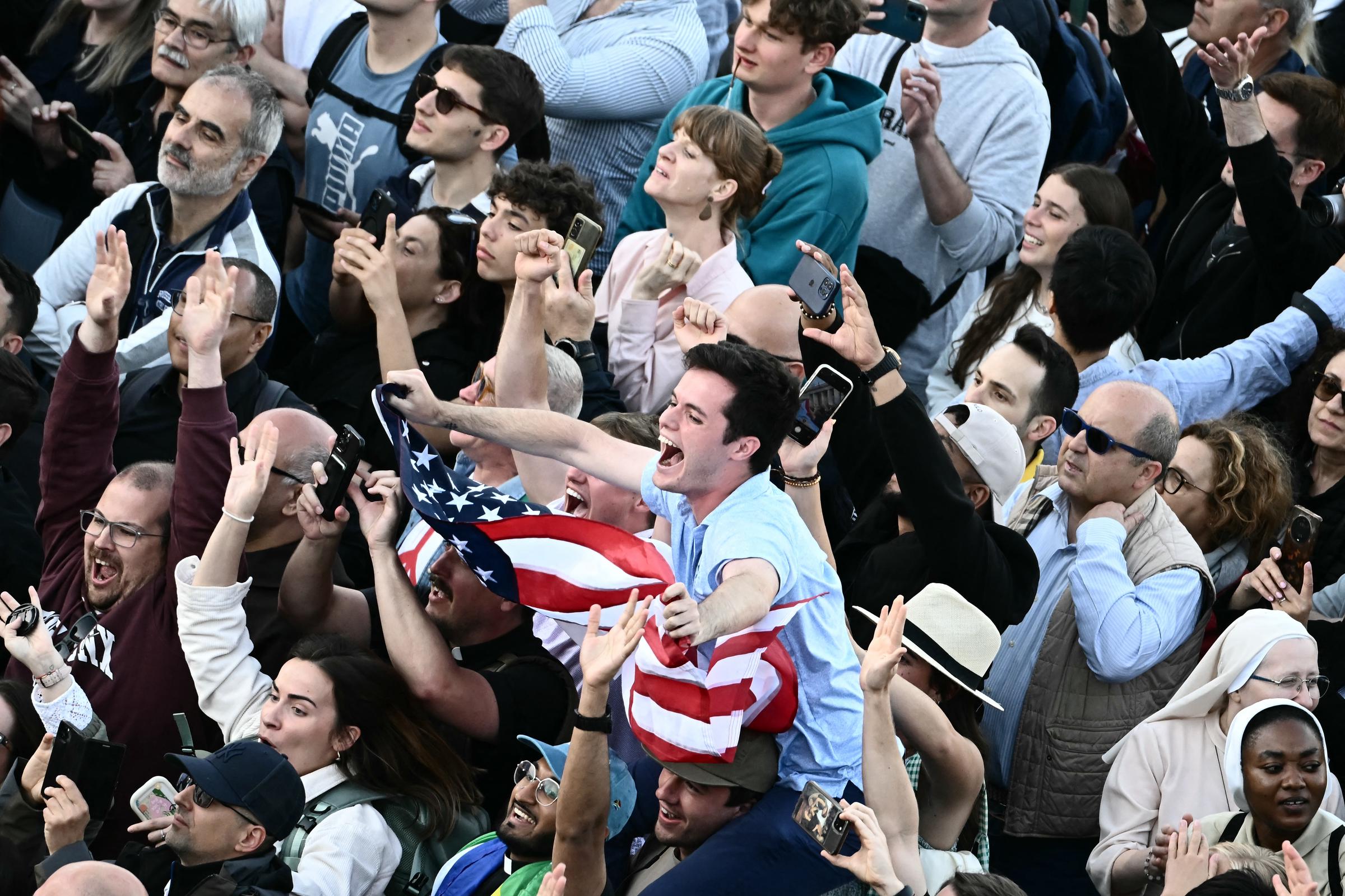
A man waves a U.S. flag in St. Peter's Square as the new pope is announced in the Vatican on May 8, 2025 | Source: Getty Images
The significance of this moment also drew a response from Trump. In a message shared on the official White House X page, he congratulated Pope Leo XIV and described his election as a proud moment for the country. He also said he looked forward to meeting him, calling it a meaningful occasion.
Although Pope Leo XIV has now stepped into a global role, his voice had already entered the U.S. political conversation before his election. In February 2025, he publicly responded to Vice President JD Vance in a post on his personal X account, "JD Vance is wrong: Jesus doesn't ask us to rank our love for others."
The message, which linked to a National Catholic Reporter article, drew wide attention and reflected his emphasis on the inclusive nature of Christian compassion.
Pope Leo XIV's first speech as the new pontiff comes after his historic election, following the conclave that succeeded the passing of Pope Francis.
The Vatican announced the decision on the evening of May 8, just one day after the conclave of 133 cardinals began their solemn deliberations. The election came after the recent passing of Pope Francis, who led the Church through a decade of transformation and renewal.
Inside the Vatican, cardinals from 71 countries — many personally appointed by Pope Francis — gathered in prayerful silence to select the next spiritual leader of the world's 1.3 billion Catholics.
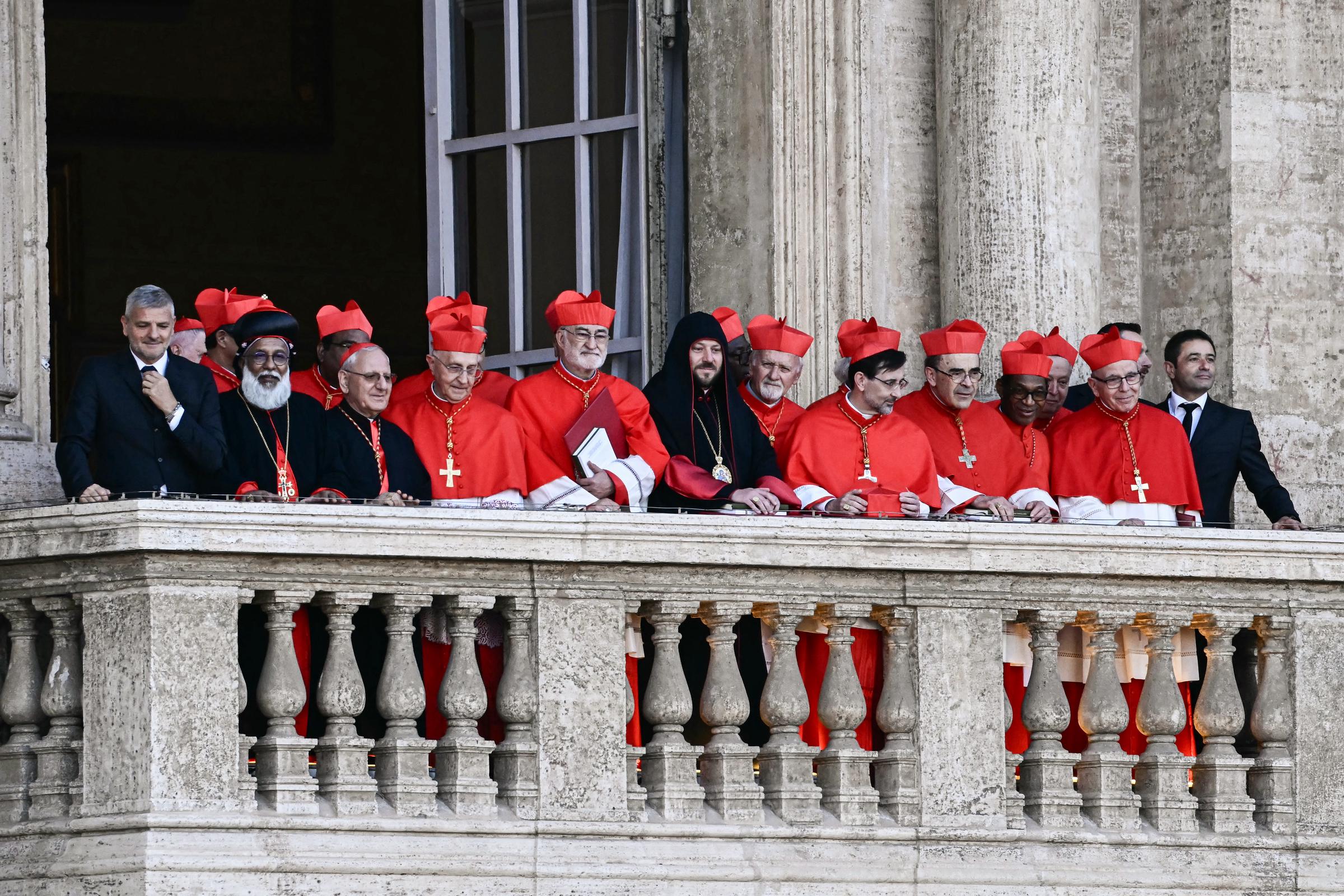
Cardinals at a balcony of the St Peter's Basilica / Source: Getty Images
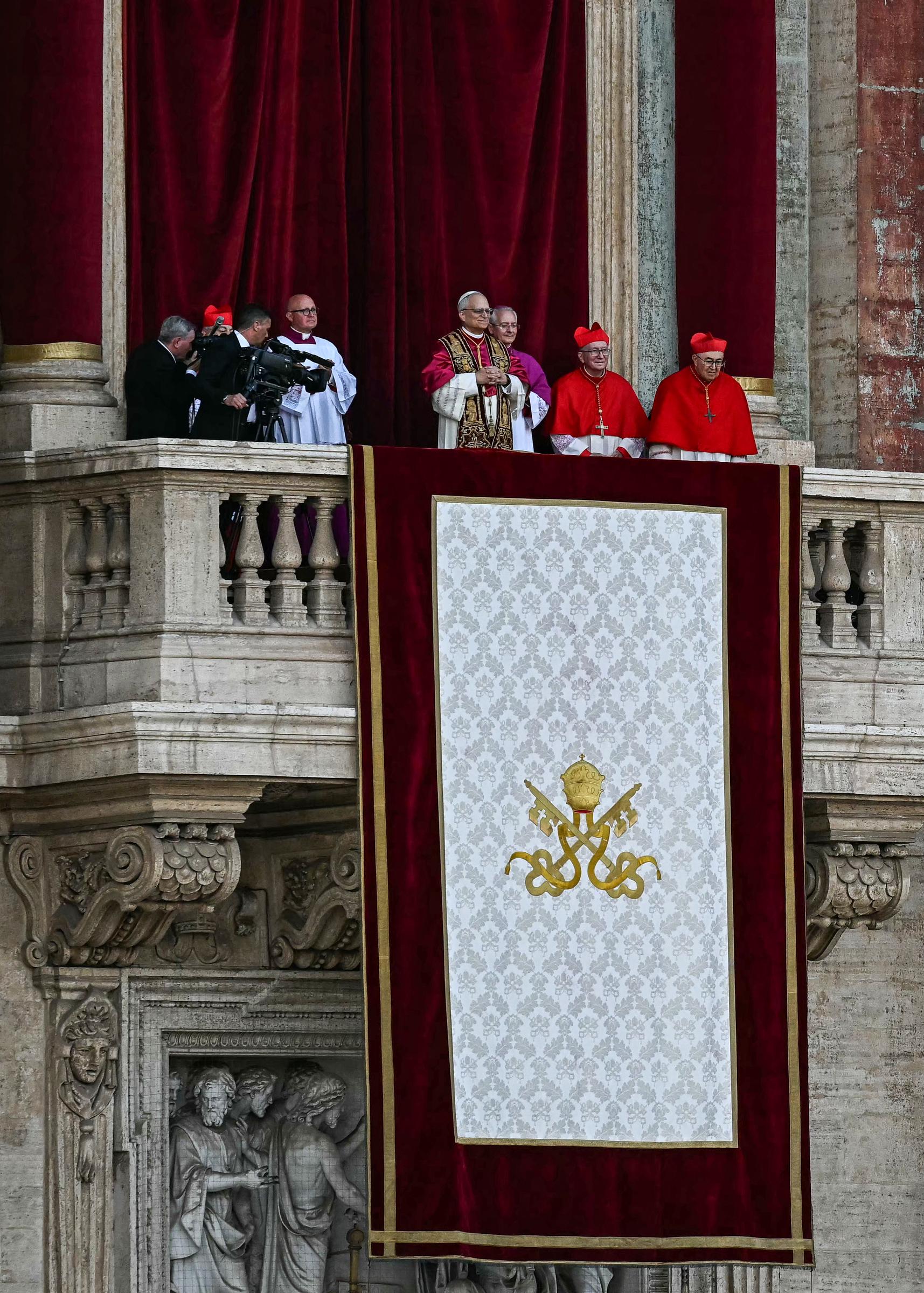
Newly elected Pope Leo XIV, Robert Francis Prevost / Source: Getty Images
Joy and emotion swept across St. Peter's Square as thousands looked skyward and saw the white smoke. Not long after, the Church confirmed the election from the balcony of St. Peter's Basilica with the traditional proclamation: "Habemus Papam" — We have a Pope.
Prevost of the United States has been elected the 267th pontiff. At 69, he becomes the first American to ascend to the papacy. Born in Chicago, Illinois, he brings a unique blend of pastoral experience and global perspective.
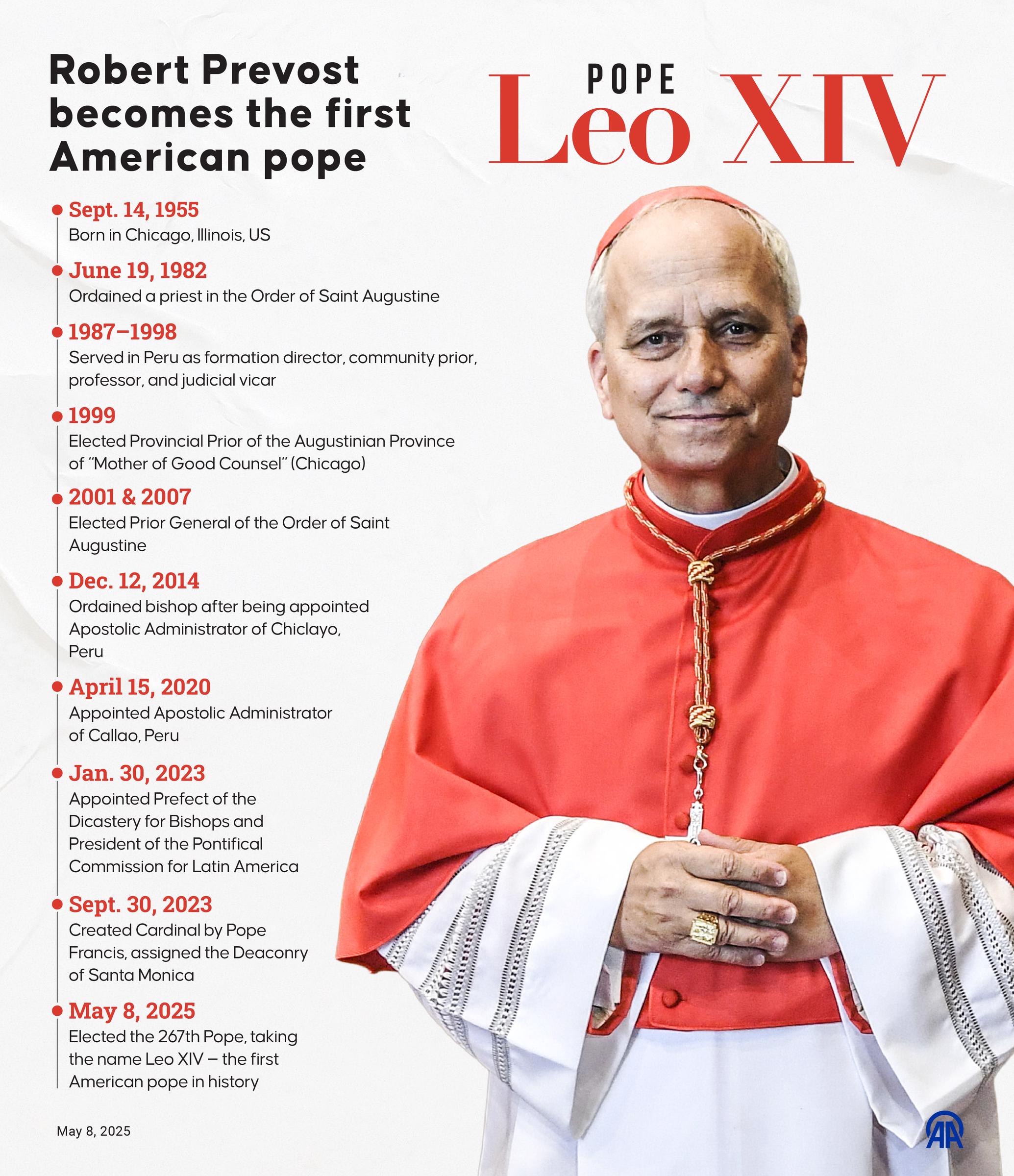
Newly elected Pope Leo XIV, Robert Francis Prevost / Source: Getty Images
Pope Leo XIV spent a decade serving as a missionary in Trujillo, Peru, and later became bishop of Chiclayo, where he led the diocese from 2014 to 2023.
Before his election, he directed a key Vatican office responsible for the appointment of bishops — a critical role during Pope Francis' drive for reform. His new papacy is expected to carry forward that same vision of renewal and inclusivity.
Among the names previously considered frontrunners were Cardinal Pietro Parolin of Italy, praised for his diplomatic acumen, and Cardinal Luis Antonio Tagle of the Philippines, beloved for his humility and rapport with the faithful.
This transition ushers in not only a new chapter for the Church but a renewed sense of hope for millions — a hope rooted in faith, compassion, and unity.
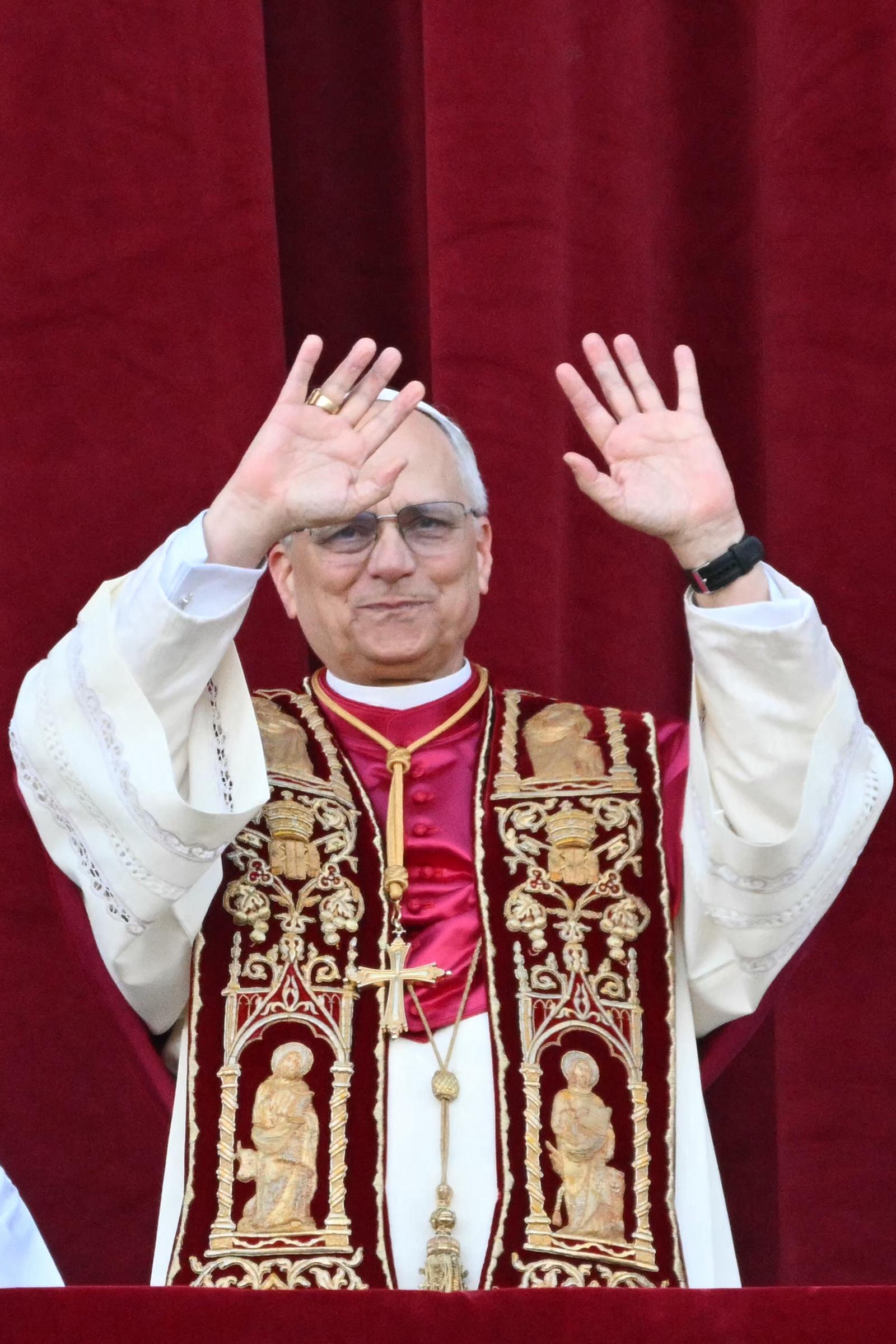
Newly elected Pope Leo XIV, Robert Francis Prevost / Source: Getty Images
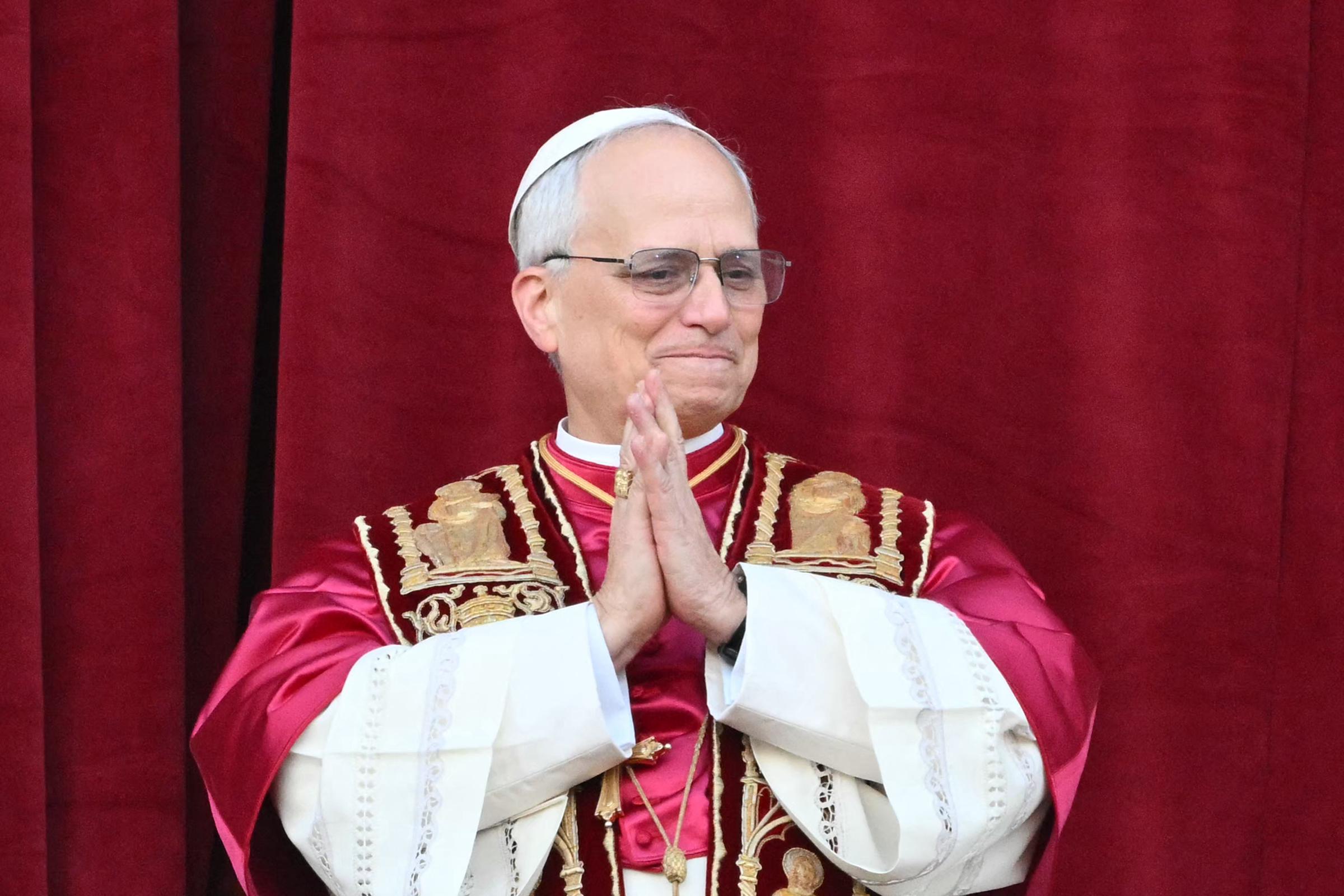
Newly elected Pope Leo XIV, Robert Francis Prevost / Source: Getty Images
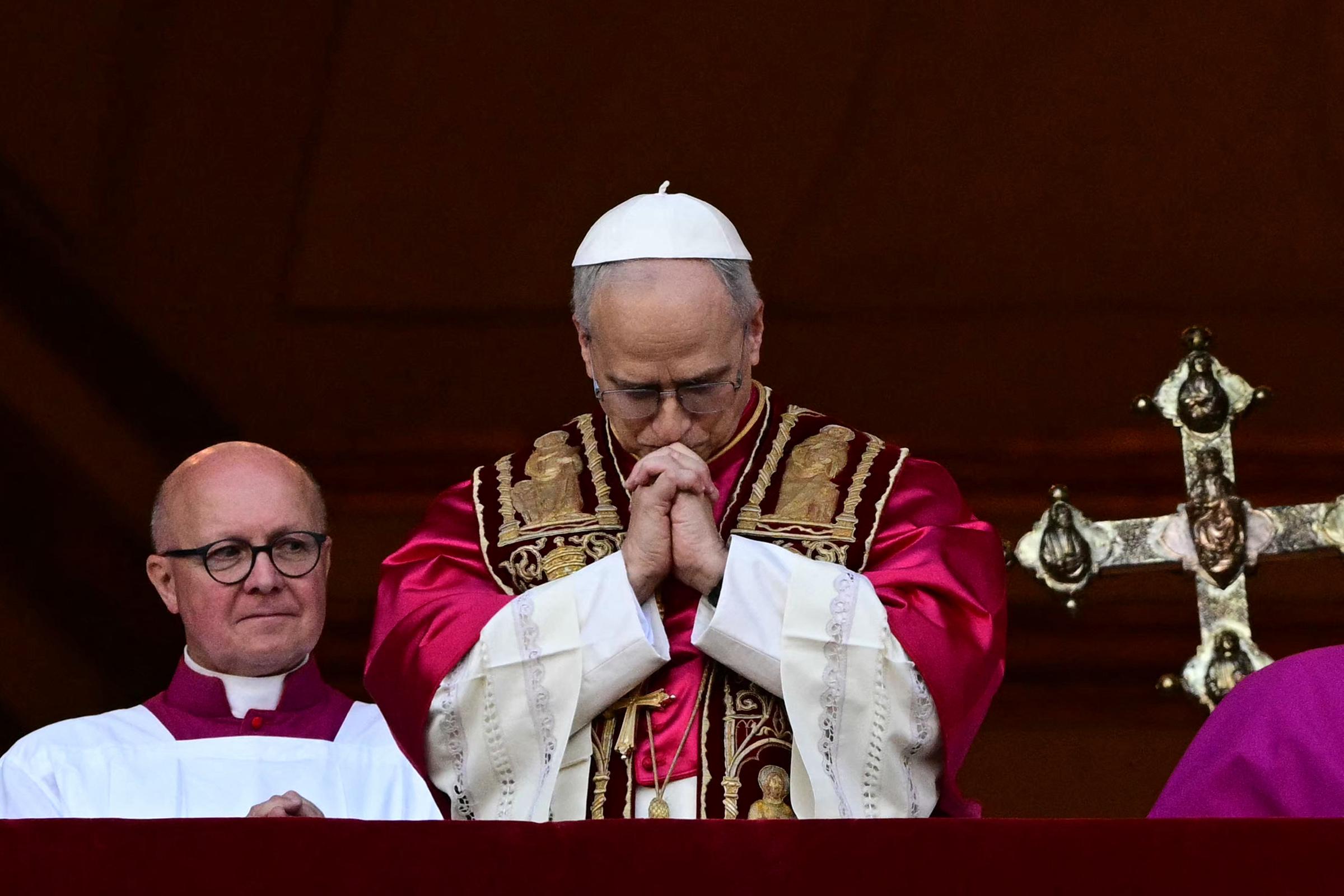
Newly elected Pope Leo XIV, Robert Francis Prevost / Source: Getty Images
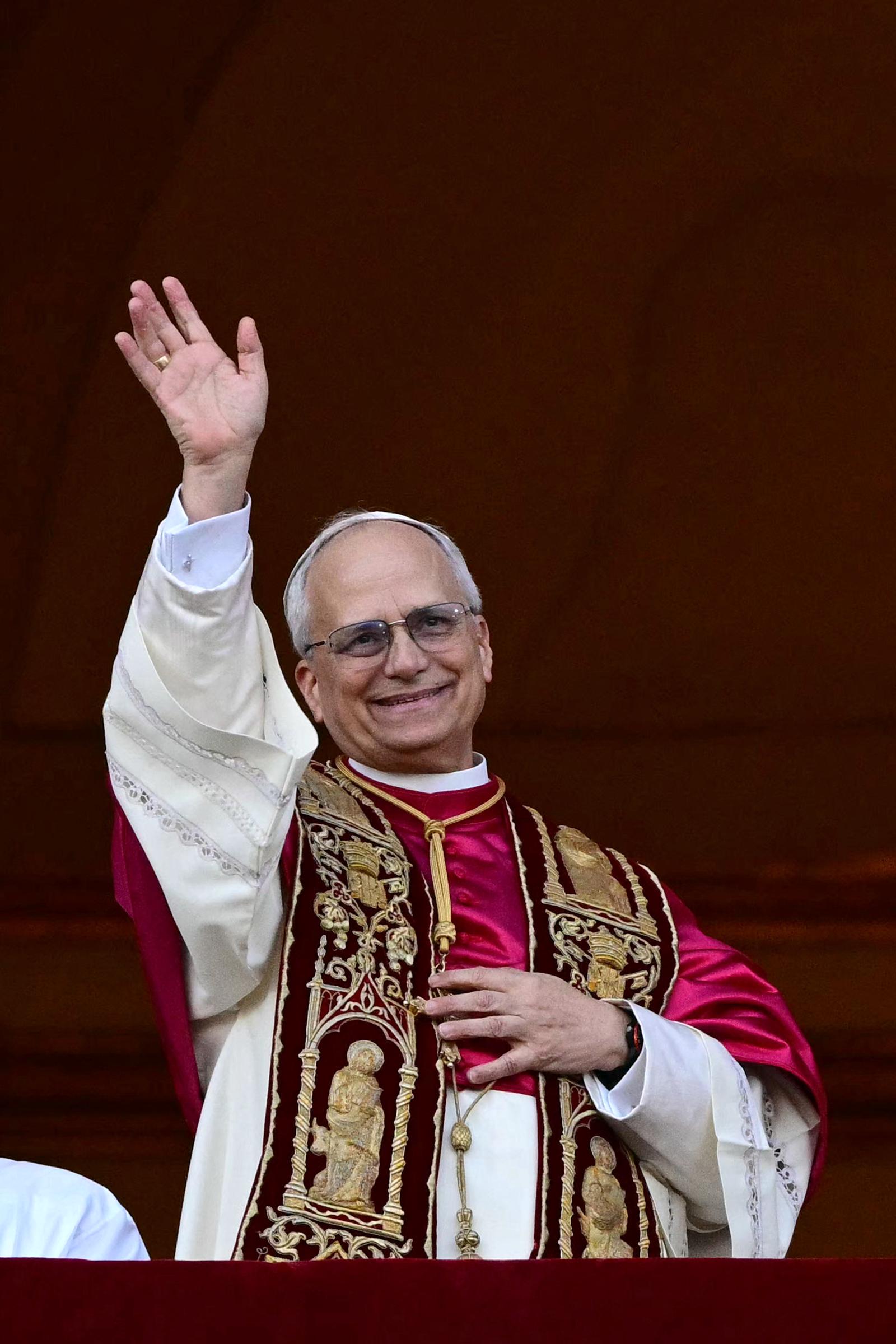
Newly elected Pope Leo XIV, Robert Francis Prevost / Source: Getty Images
Before the moment of white smoke signaled the Church's decision, the conclave began with a more familiar outcome.
On May 7, cardinals gathered in the Sistine Chapel to begin the conclave to elect the next pope. By 9:00 p.m., black smoke rose from the chapel's chimney, showing that the first vote had ended without a result. The moment drew reactions from people following the news around the world.

A netizen's reaction to the result of the first day of the conclave in Vatican City | Source: Facebook/cnninternational
According to Vatican News, the ballot concluded without the election of a Pope. As the outcome remained uncertain, around 45,000 people gathered in St. Peter's Square, awaiting an announcement after 7:00 p.m. — but it wouldn't arrive until nearly two hours later.
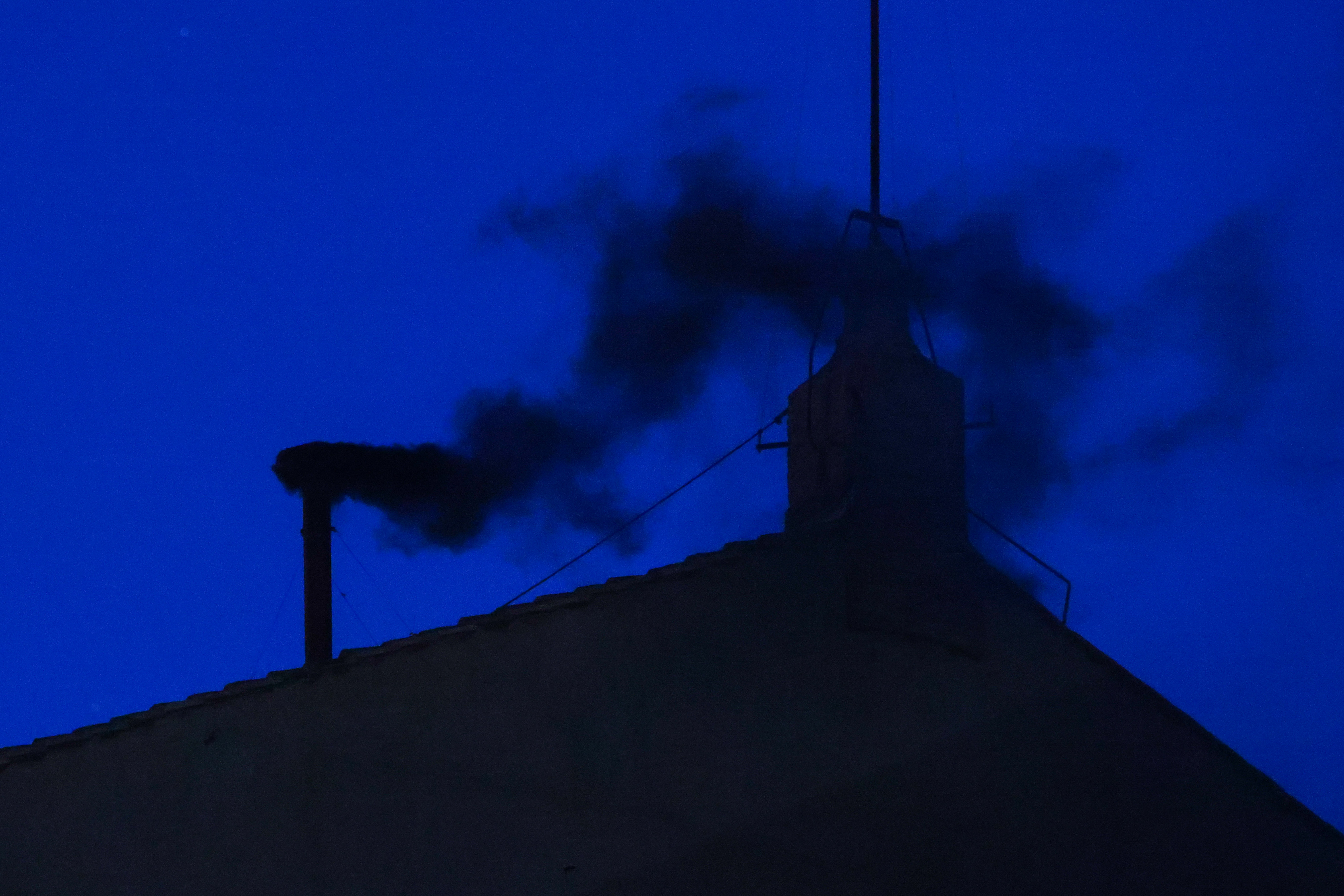
Black smoke is rising from the Sistine Chapel's chimney in Vatican City, on May 7, 2025 | Source: Getty Images
The crowd reportedly began leaving the square soon after black smoke rose above the Sistine Chapel. Among those waiting were tourists hoping their visit would align with a historic announcement, as well as locals who had arrived after work and said they planned to return the following day.
Sharing in the anticipation was Deacon Nicholas Nkoronko from Tanzania, who stood among the faithful in the square. He said, "Our role here is to pray and to join with other Christians, other Catholics, to pray for the Holy Spirit to guide the whole process."
Nkoronko emphasized that the Pope's origin — whether from Africa, Asia, or America — was secondary to his spiritual leadership, stating that what the Church truly needs is "a holy Pope," someone who "will guide the Church and will be the pastor of the Church."
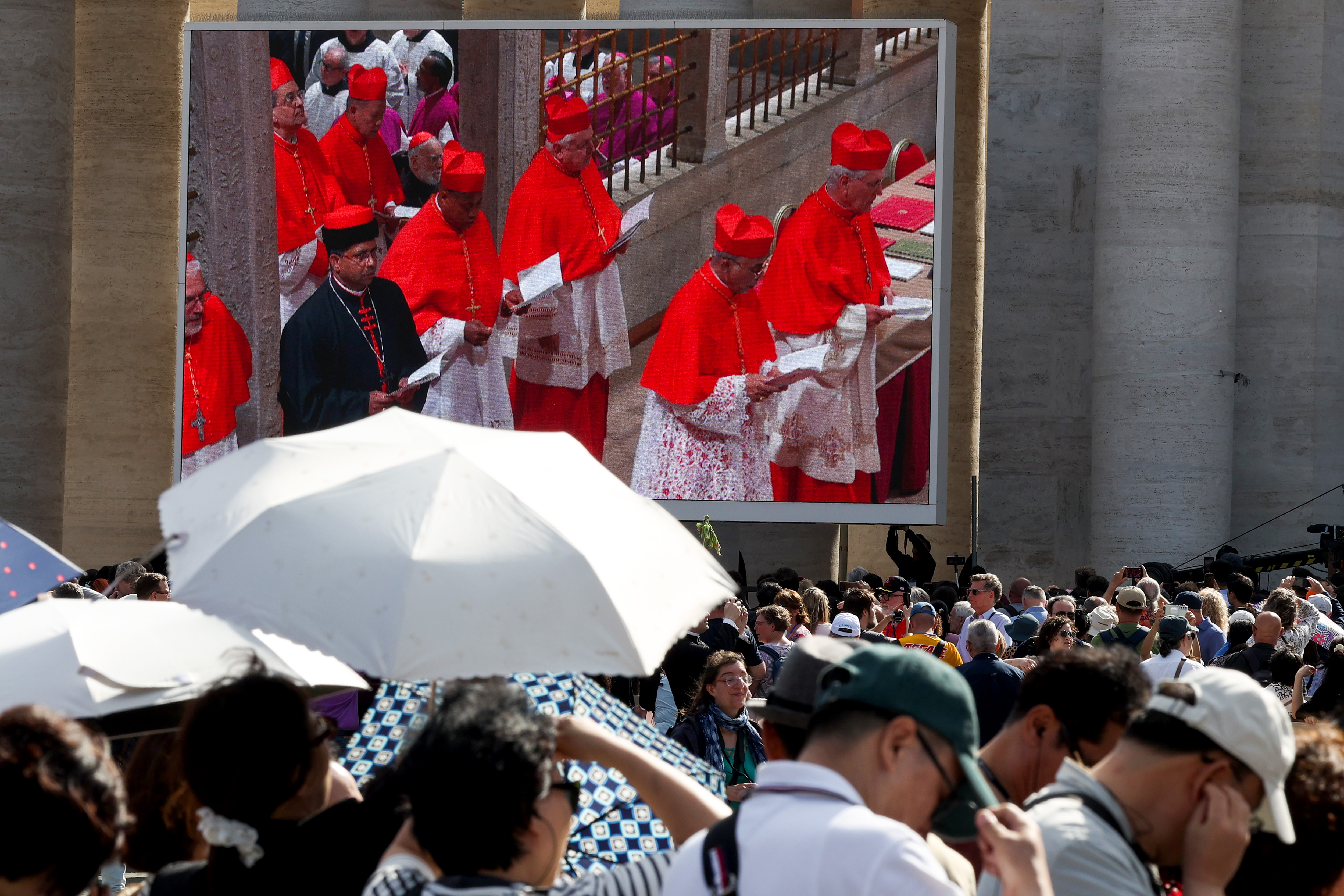
Cardinals enter the Sistine Chapel for the conclave, shown on screens at St. Peter's Square in Vatican City on May 7, 2025 | Source: Getty Images
Online, public reactions varied sharply. One netizen wrote, "Swearing secrecy is not a good thing. This should be open. Secrets only leave room for deception." Another stated, "It is not worthy [sic] one to discuss with. Yet another election with no use."
Others questioned the process. One remarked, "I think these people are voting for themselves," while another asked, "took so long?"
One commenter expressed skepticism about the conclave's speed, predicting it could take months before a new Pope is elected. Another reflected on Pope Francis's legacy, suggesting that finding someone equally great may be difficult.
A different person offered a heartfelt prayer, asking for divine intervention and hoping the next Pope would be someone truly connected to the people. Someone shared mixed emotions — hopeful for the announcement of a new Pope, yet saddened by the end of Pope Francis's tenure.
Another observer acknowledged the expected outcome of the first ballot and offered well-wishes to the cardinals as they prepare for the next day's proceedings.
While the crowd reflected on the moment, the process inside the Sistine Chapel followed long-established rhythms, as explained by Church officials and scholars familiar with the conclave.
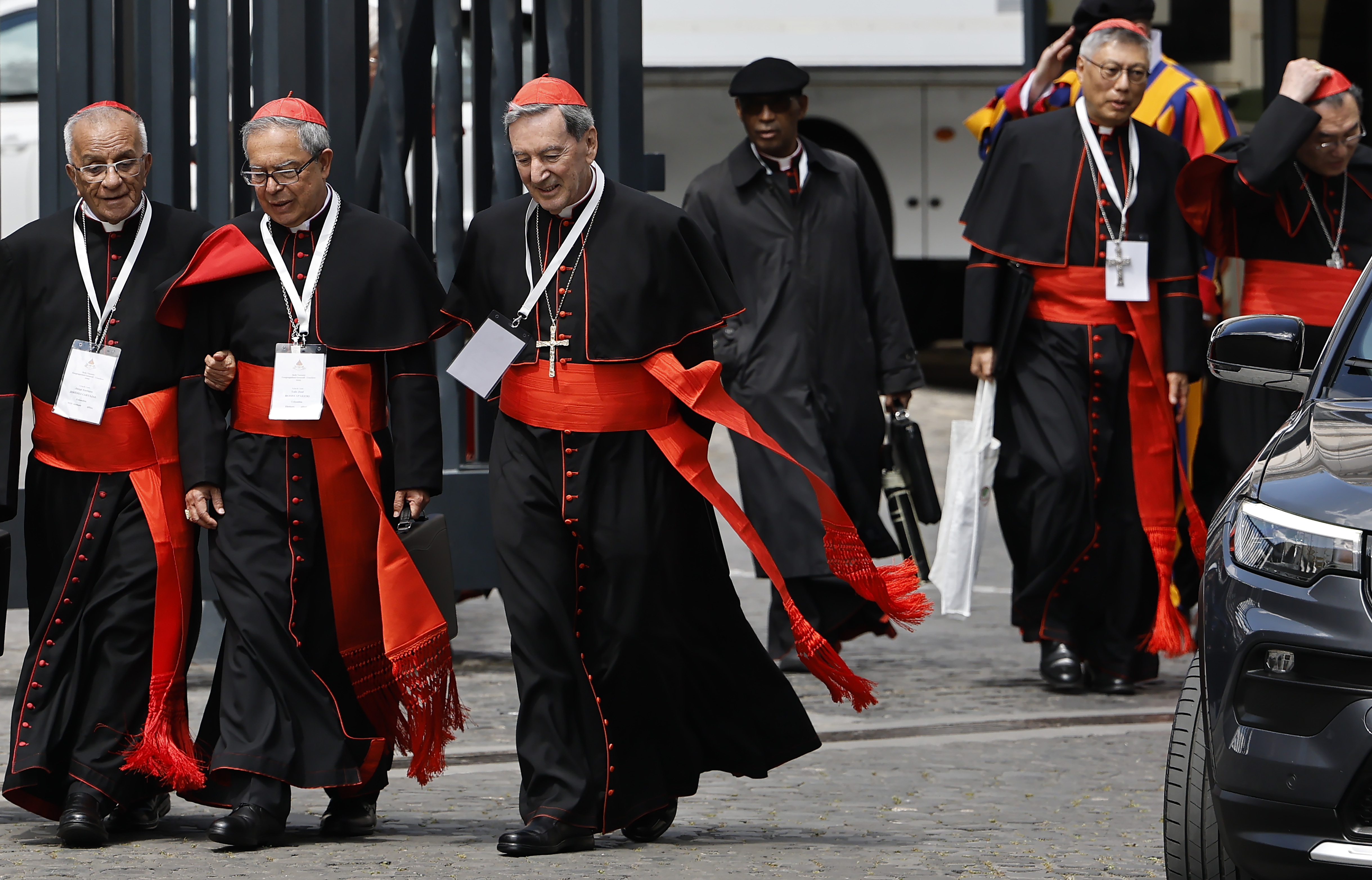
Cardinals Jorge Enrique Jiménez Carvajal and Luis José Rueda Aparicio from Colombia leave a meeting with other cardinals on April 28, 2025, in Rome, Italy. | Source: Getty Images
Kurt Martens, a professor of canon law at The Catholic University, anticipated that the first ballot would run late due to a combination of factors.
He cited the extended length of the homily by Cardinal Cantalamessa, "who has a tendency to preach long," as well as the drawn-out oath-taking process, which he said "took forever as they entered into conclave." Martens noted this was "much longer than last time around."
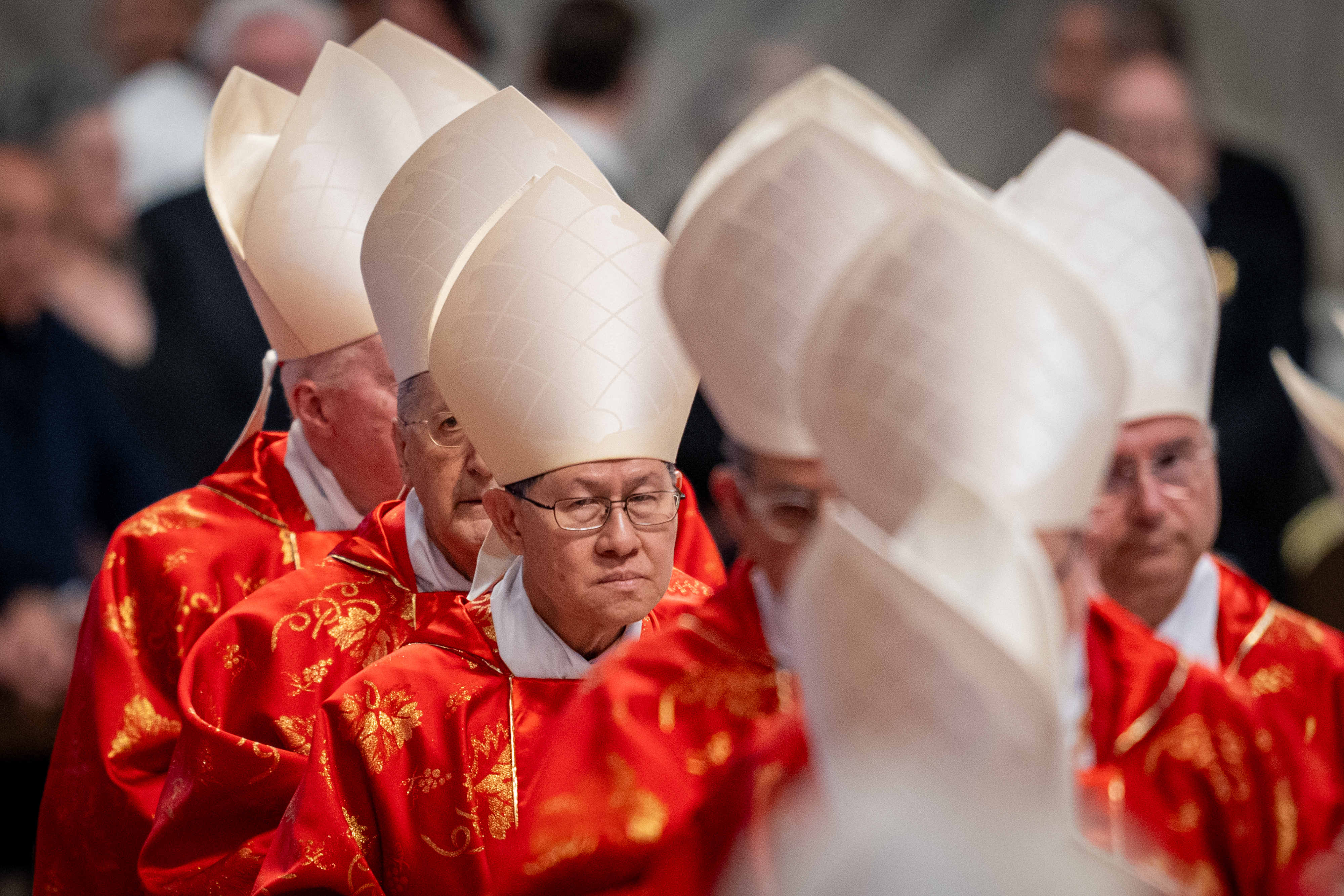
Cardinal Luis Antonio Tagle attends the final Mass before the conclave at St. Peter's Basilica on May 7, 2025 | Source: Getty Images
Martens added that the process unfolds at a measured pace, in part due to the age of many participants. "It's not like you have 20-year-olds running up to the altar, so that takes time," he said.
He also pointed to procedural demands, such as selecting revisers to verify the scrutineers' work. "So it's a lengthy process," he said, and later added, "So be patient. And extend your airtime a little longer."
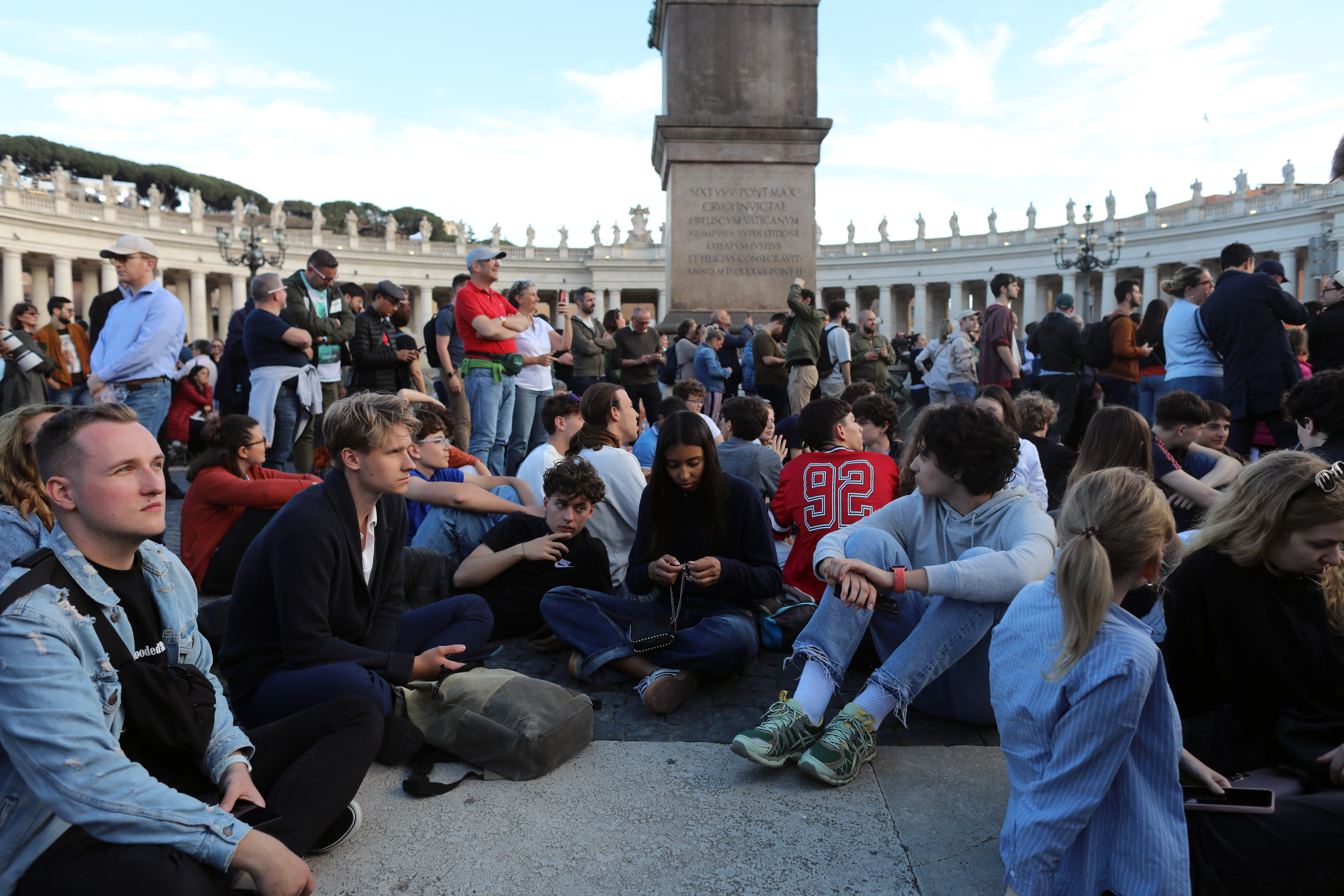
People gather in St. Peter's Square on May 7, 2025, in Vatican City for the first day of the conclave | Source: Getty Images
While the first round rarely produces a result, it still serves a purpose. Bishop Robert Barron, founder of Word on Fire, noted that while "it's close to no chance" that a pope is selected during this time, the vote still matters.
He called it "an important one, almost certainly indecisive," but noted that it "will give a good indication of where the conclave is."
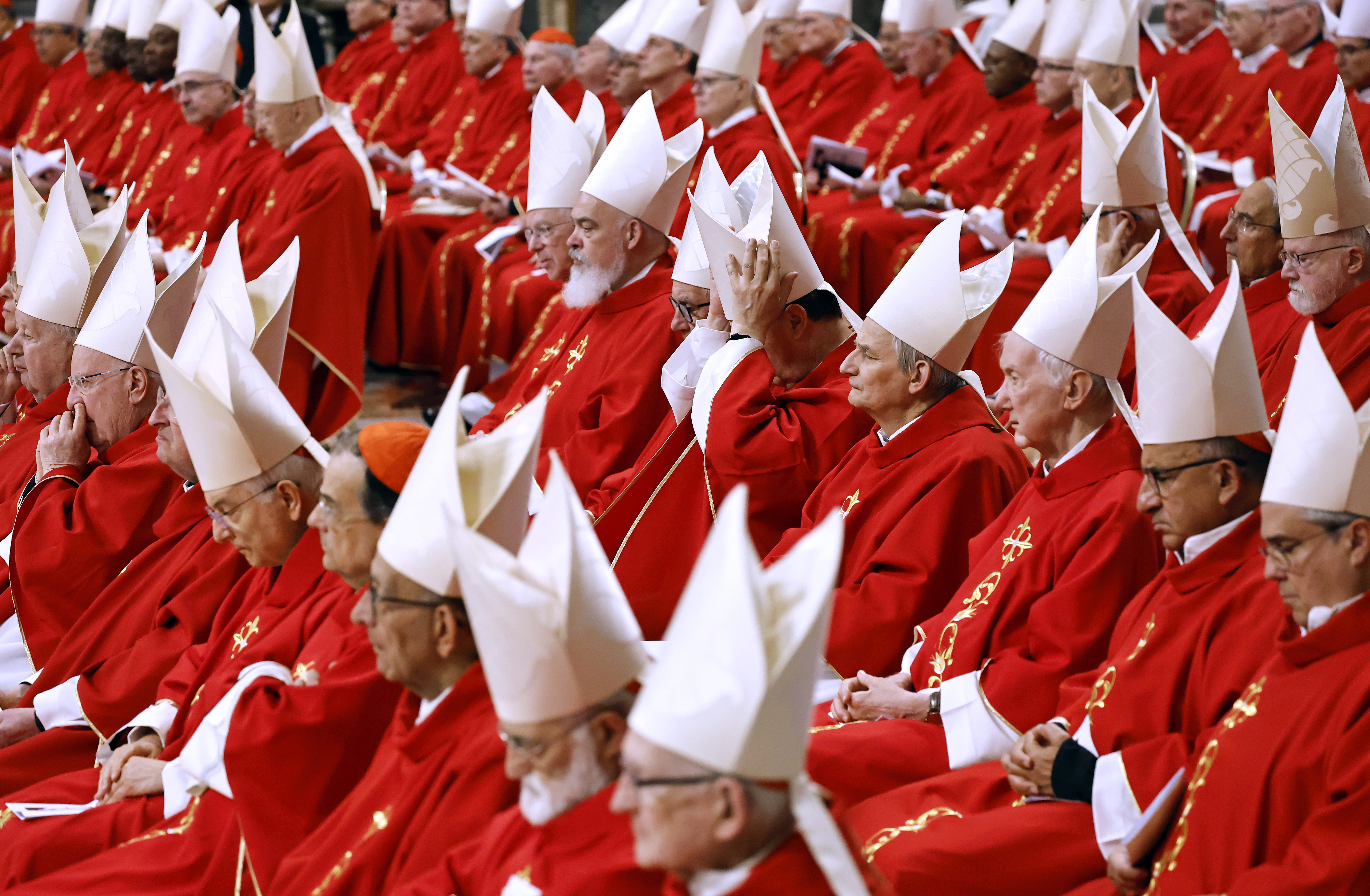
Cardinals attend the third Novemdiales mass for Pope Francis in St. Peter's Basilica on April 28, 2025. | Source: Getty Images
Meanwhile, Reverend Sam Sawyer, a Jesuit priest and editor-in-chief of America Media, emphasized that the conclave's secrecy is designed to shield the cardinals from outside influence. "It gives them the freedom to vote within their own conscience for the man they think is best suited to be the pope," he remarked.
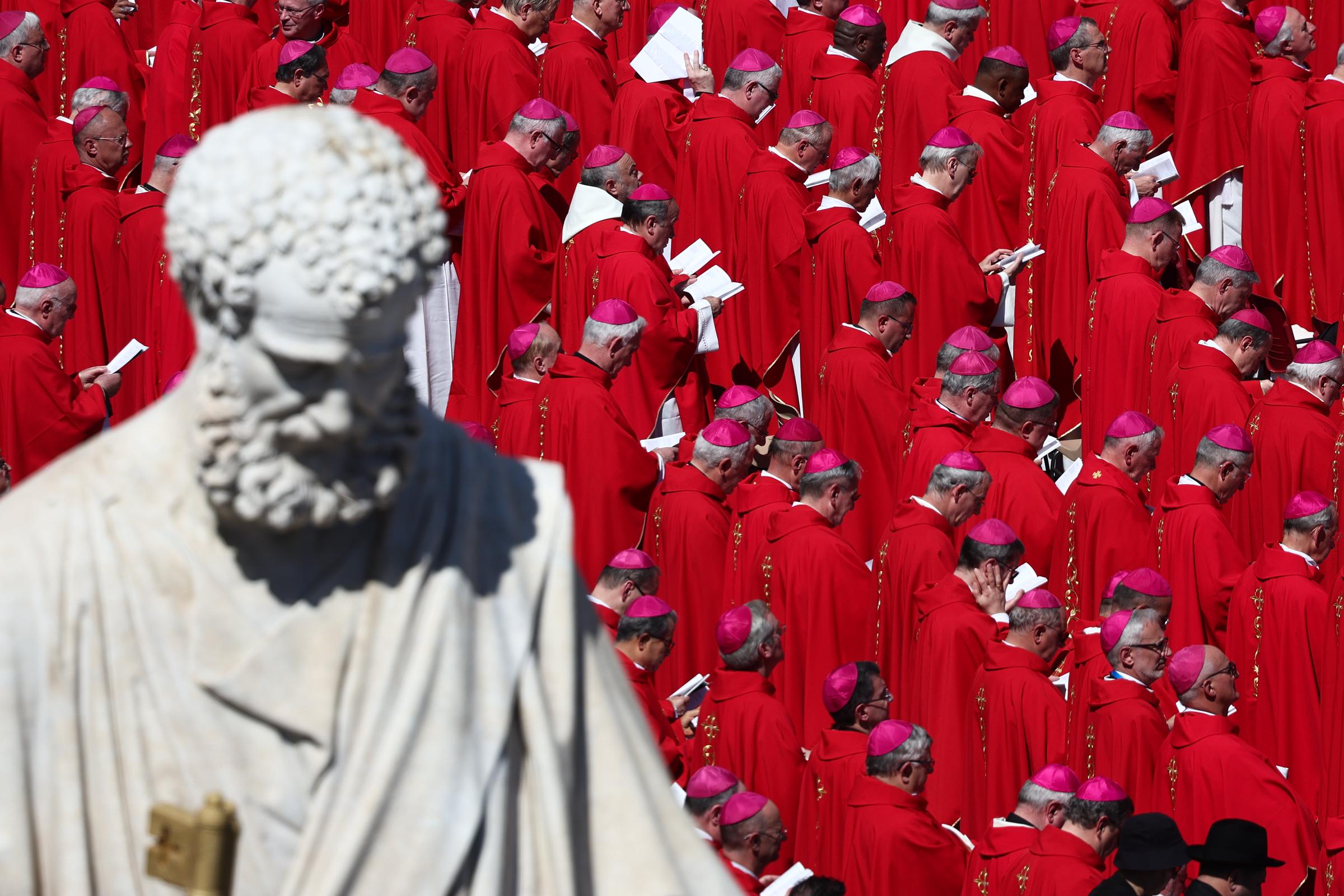
The cardinals attend the funeral ceremony of Pope Francis at St. Peter's Square in Vatican City on April 26, 2025. | Source: Getty Images
He added that it also enables open and honest discussions among the electors, allowing them "to be really frank with each other."
Sawyer further noted the historical importance of confidentiality, "In the past, one of the reasons to protect the conclave this way is because it would come under political pressure or come under, you know, pressure from people who would basically hand the papacy down within families."
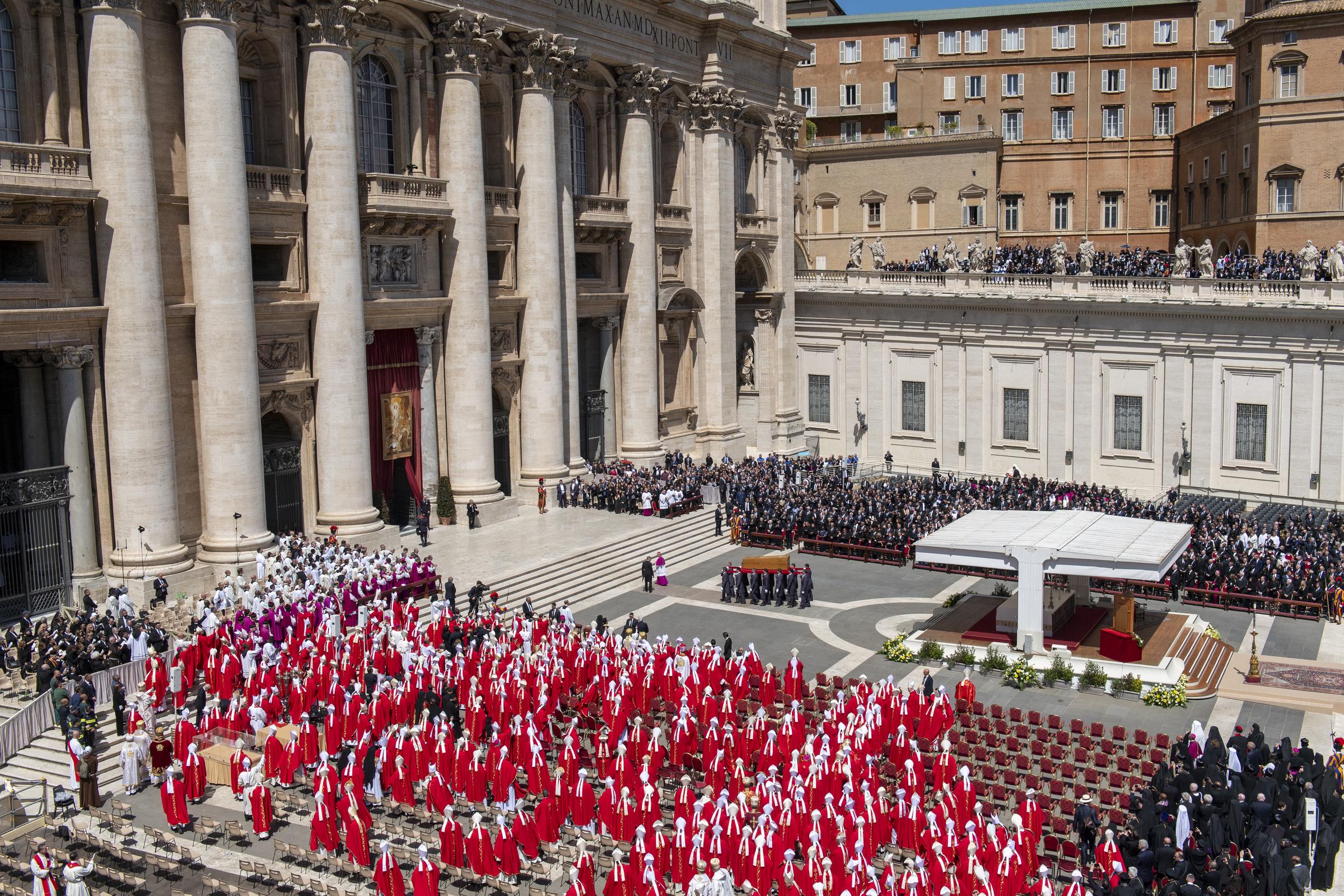
Pope Francis' coffin is carried into St. Peter's Basilica after his funeral in Vatican City on April 26, 2025. | Source: Getty Images
That protection is reinforced by the rigid structure of the conclave itself. As detailed by Vatican News, each stage of the election follows a strict and centuries-old procedure.
Cardinal electors receive ballots printed with the Latin phrase "Eligo in Summum Pontificem." They write the name of their chosen candidate, fold the ballot, swear an oath, and place it in a chalice at the altar using a plate.

A cardinal reads from the Gospel as others stand in prayer during the papal conclave at the Vatican on May 7, 2025 | Source: Getty Images
For those unable to approach the altar due to illness, a scrutineer deposits the vote on their behalf. If a cardinal is too unwell to be in the chapel, three designated infirmarii carry a sealed box to their quarters to collect the ballot, then return it under strict procedural safeguards.
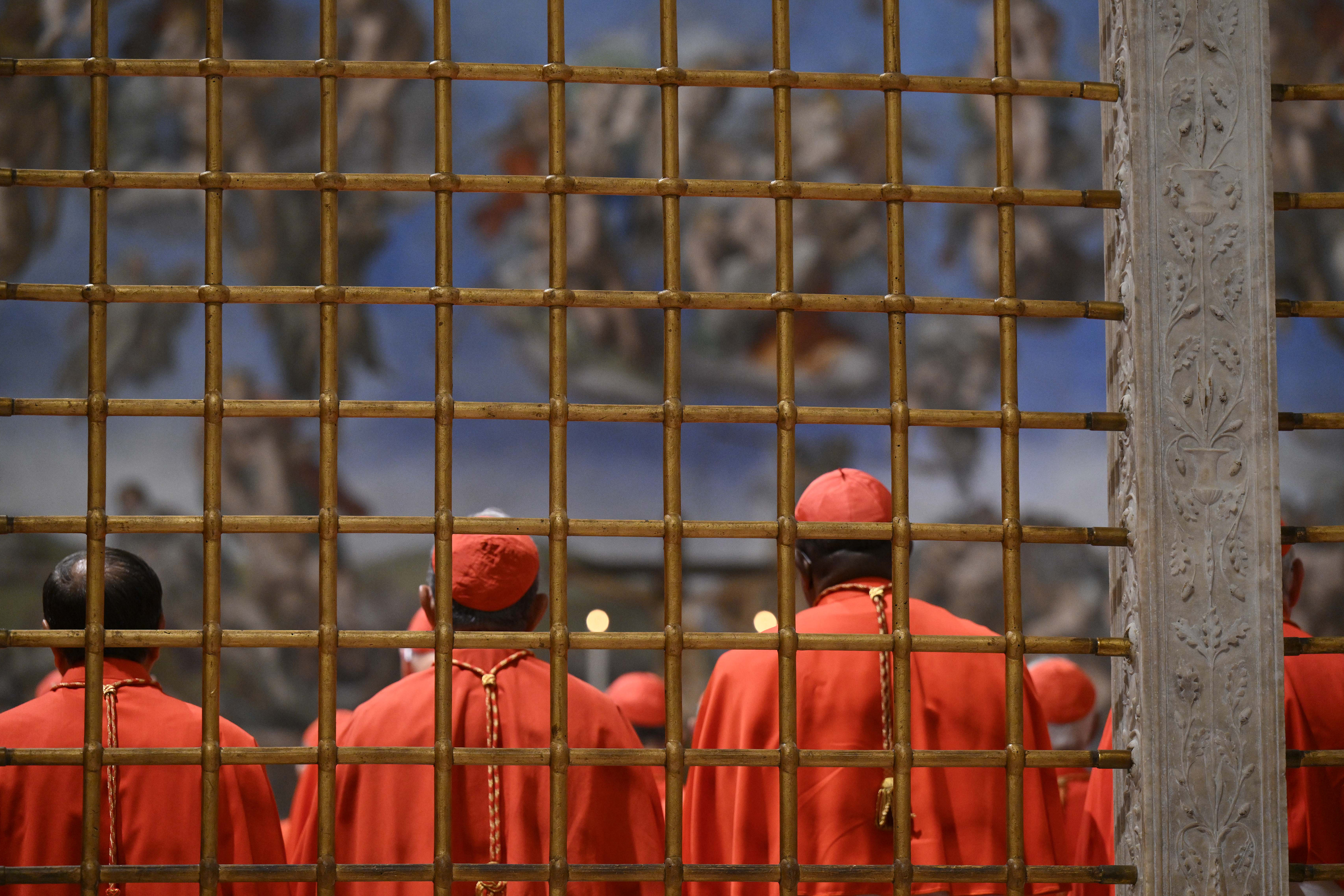
Cardinals gather inside the Sistine Chapel as the papal conclave begins in Vatican City on May 7, 2025 | Source: Getty Images
After all votes are cast, scrutineers confirm the count and read each name aloud. The ballots are then threaded together and burned in a cast-iron stove. A second stove, installed in 2005, releases the smoke through the chimney. Chemicals added to the fire produce black smoke if no Pope is elected and white smoke when one is.
To elect a Pope, a candidate must receive a two-thirds majority — at least 89 votes from the 133 electors. Up to four ballots are held each day. If no decision is reached after multiple rounds, the process includes scheduled pauses for prayer and reflection.
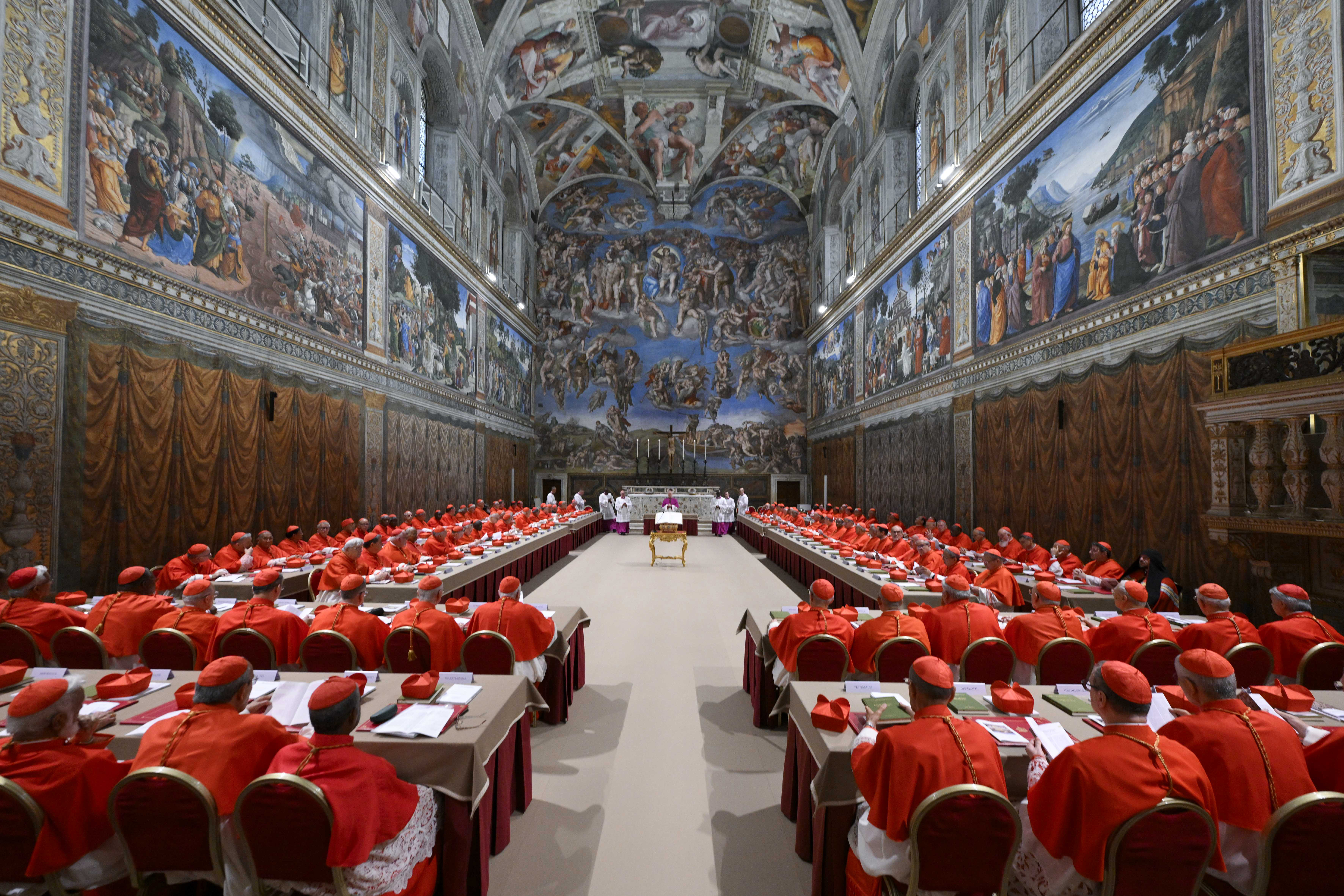
Cardinal-electors enter the Sistine Chapel on May 7, 2025, to begin the conclave following Pope Francis’ death | Source: Getty Images
After 21 inconclusive votes, only the two leading candidates remain eligible, though they cannot vote themselves, and the two-thirds threshold still applies.
